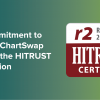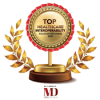Since this concept of a universal exchange platform is new, there is still some confusion about ChartSwap’s role in the record request process. ChartSwap is NOT the custodian of records and is NOT a release of information vendor. The providers that manage their record requests through ChartSwap are responsible for reviewing their requests independently, setting custodian fees, uploading records and responding to any issues. ChartSwap will support these functions to the extent we are able, but ultimately, our providers fulfill your requests.
Today, many of the providers that leverage the ChartSwap platform are billing groups for hospital-based specialties and EMS groups. Since billing groups receive a majority of their requests from personal injury law firms, this paper will explore the typical steps required for a law firm to request a copy of a bill and attempt to quantify the direct expense (labor/postage), as well as the indirect cost (time, accounting expenses, etc.).
By automating the record request process, ChartSwap will dramatically reduce the law firm’s labor (overhead) expense associated with requesting records, while adding security and providing an opportunity to convert the loss related to requesting records to a case expense through ChartSwap’s requestor-paid transaction fee. Although custodian fees vary by state statute, the process and internal cost to obtain records is relatively consistent and doesn’t correlate with the amount of the actual custodian fee paid to the provider.
The law firms’ overhead costs included in collecting medical and billing records are one of the firm’s most substantial expenses but is challenging to track, and most firms aren’t able to reliably measure the costs related to the record collection process. Although law firms have automated many of the steps listed, as long as the US Postal Service remains at the center of the process, only limited efficiencies can be achieved.
To learn more about how ChartSwap is revolutionizing the record request process, download the white paper






